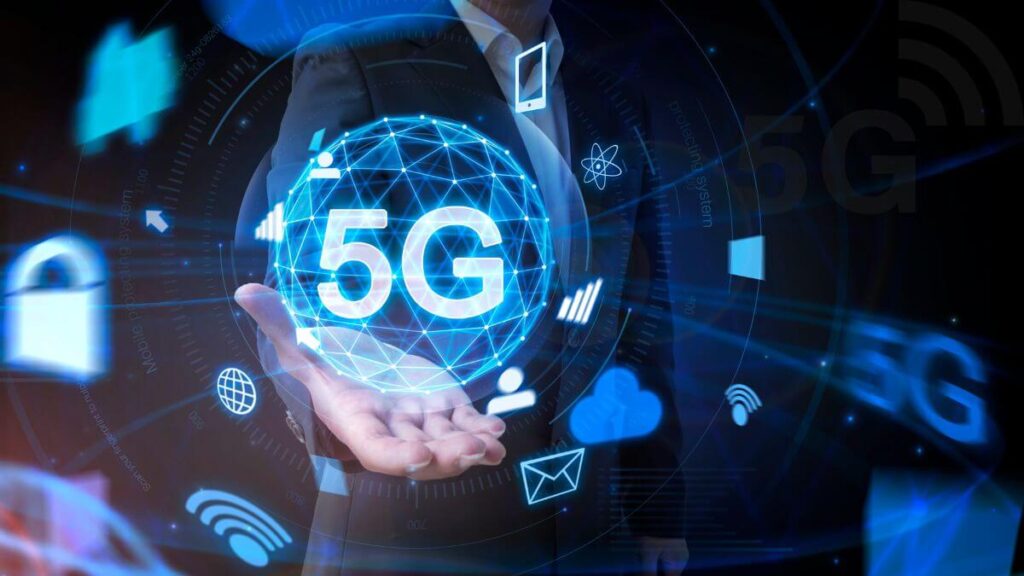How Does 5G Technology Enhance the Internet of Things (IoT)?

How does 5G technology enhance the Internet of Things (IoT)? Imagine your fridge telling you when you’re out of milk or your thermostat adjusting before you get home. That’s IoT at work, and 5G is improving it. With faster speeds and lower latency, 5G allows IoT devices to communicate more efficiently, paving the way for smarter homes, cities, and industries. Let’s dive into how this technology is transforming our connected world.
Table of Contents
What is 5G technology, and how does it work?
5G technology is the next generation of mobile networks, offering faster speeds, lower latency, and higher capacity than 4G. Imagine downloading a movie in seconds or having almost no delay in live video calls – that’s what 5G brings to the table.
It uses higher frequency bands and advanced technology to handle more data, allowing for smoother and more reliable connections. This means better performance for everything from streaming videos to connecting numerous smart devices in homes and cities. Simply put, 5G is set to revolutionize how we use and interact with the internet, making everything quicker and more efficient.
How does 5G technology enhance the Internet of Things (IoT)?
5G technology significantly boosts the capabilities of IoT devices, making our connected world smarter and more efficient. Here are the key ways it enhances IoT:
- Faster data transfer speeds: 5G allows IoT devices to communicate and share data faster, improving overall performance.
- Lower latency: IoT devices can interact in real-time with reduced delay times, making processes like autonomous driving and remote surgeries possible.
- Greater device capacity: 5G supports more connected devices, ensuring smooth and reliable connections even in densely populated areas.
- Improved energy efficiency: 5 G allows IoT devices to operate more efficiently, extending battery life and reducing energy consumption.
- Enhanced reliability: 5 G’s robust network architecture provides more stable and dependable connections for critical IoT applications.
- Better network slicing: 5G enables customized network segments for specific IoT applications, optimizing performance for diverse needs.
What are the advantages of 5G technology for IoT applications?
- 5G technology offers faster response times, improved reliability, and the ability to support more devices simultaneously, transforming the IoT landscape.
- With 5G, IoT devices can communicate almost instantly, making real-time applications like smart traffic management and remote healthcare more effective.
- The enhanced reliability ensures consistent performance, which is crucial for critical operations.
- Additionally, 5G’s ability to handle many connections means that more devices can be integrated into IoT networks without sacrificing performance.
- This leads to smarter homes, more efficient cities, and advanced industrial applications.
How does 5G technology impact smart homes?
5G technology is revolutionizing smart homes by making devices more responsive and interconnected. Here are the key impacts:
- Real-time control: With 5G, smart home devices can respond instantly to commands, enhancing user experience.
- Seamless connectivity: 5G supports more devices, allowing for smooth and reliable connections throughout the home.
- Enhanced security: Faster data transfer and improved reliability ensure that security devices like cameras and alarms are more effective and dependable.
- Improved energy management: Smart thermostats and monitoring systems work more efficiently, optimizing energy usage and saving costs.
- Better integration: 5G allows different smart devices to work harmoniously, creating a fully integrated smart home environment.
- Future-ready: The advanced capabilities of 5G ensure that smart homes are equipped to handle new and emerging technologies effortlessly.
How does 5G technology enhance smart cities?
5G technology is pivotal in advancing smart city initiatives by improving infrastructure, traffic management, and public services. Here’s how it’s being utilized:
- Efficient traffic management: 5G enables real-time communication between traffic lights, vehicles, and sensors, reducing congestion and improving road safety.
- Enhanced public services: Faster and more reliable connections, such as emergency response systems and smart utilities, support better public services.
- Improved infrastructure monitoring: 5G allows for continuous monitoring of infrastructure like bridges and buildings, ensuring timely maintenance and safety.
- Smart lighting and waste management: IoT devices connected via 5G can optimize street lighting and waste collection, leading to energy savings and cleaner cities.
- Citizen engagement: 5G enhances communication between city officials and residents, enabling more responsive governance and community services.
- Environmental monitoring: Real-time sensor data helps monitor air quality and environmental conditions, promoting a healthier urban environment.
What role does 5G technology play in industrial IoT?
5G technology revolutionizes industrial IoT by enabling automation, predictive maintenance, and enhanced operational efficiency. With its ultra-fast speeds and low latency, 5G supports real-time data exchange, making automated systems more responsive and reliable.
Continuous monitoring of machinery makes predictive maintenance more effective, reducing downtime and costs. Additionally, 5G’s ability to connect many devices simultaneously boosts operational efficiency across industries, ensuring seamless coordination and improved productivity. This makes 5G a game-changer for modern industrial operations.
How secure is the combination of 5G technology and IoT?
Combining 5G technology and IoT brings enhanced security measures and new challenges. While 5G offers improved encryption and authentication methods, many connected devices increase potential vulnerabilities.
To address these concerns, robust security frameworks, including network slicing, real-time threat detection, and device-level security protocols, are implemented. These measures ensure that IoT networks remain protected, maintaining the integrity and privacy of data in the 5G era.
Conclusion
In conclusion, 5G technology significantly enhances the Internet of Things (IoT) by providing faster speeds, lower latency, and greater capacity. These advancements lead to smarter homes, more efficient cities, and transformative industrial applications.
While security challenges exist, robust measures are in place to protect IoT devices and networks. As 5G continues to evolve, it will undoubtedly revolutionize how we interact with technology, making our connected world more efficient, secure, and innovative.

